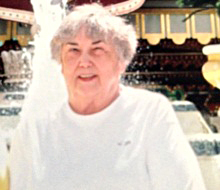
Ruth Nelson Mairella knew early in her life that she wanted to donate her body to science. For one, the financial advantages — not having to worry about the high cost of burial — were attractive. For two, the notion of performing a valuable deed, of giving back, greatly appealed to her.
After Ruth and her husband made the decision to donate their bodies, they shared their wishes with their two daughters, Lynne and Andrea. And once the decision was made, Ruth tried to stay as fit as possible, doing all the right things to ensure her body would be of value after death.
In addition to raising two daughters, Ruth dedicated herself to a career in banking. She used her leadership abilities and human resources know-how to help improve professional opportunities for women, which was especially meaningful in the 1950s and 1960s.
After Ruth retired at age 62, she volunteered at a local hospital and library because she felt she had more to give. “She wasn’t a little old lady yet,” says Andrea.
Sensing she could contribute on a larger scale, Ruth joined the Red Cross, working on the national disaster team and traveling across the United States to help after floods and other disasters. During the Sept. 11 attacks, Ruth went to Shanksville, performing field work and helping with staffing.
Once her eyesight began to deteriorate as a result of macular degeneration and traveling became difficult, Ruth was forced to take it easy. Slowing down was bad enough; Ruth was saddened to think that her deteriorating health meant that her body would be less valuable after death. During doctor visits, she would ask if her eyes or her heart were still worth anything.
In February of 2013, Ruth passed away. As she requested, her body was donated to Cleveland Clinic. Her gift was not only valuable, it was priceless.
When Ruth’s body was about to be transported from hospice to Cleveland Clinic, Andrea recalls feeling anxious about her mom’s decision. When the transporters arrived, she was quickly reassured. “The two gentlemen were very respectful and professional, and expressed a genuine understanding of what was about to happen,” she says.
Not only did the experience assure Andrea that her mom’s decision was the right one, but it also confirmed for her that she, too, could choose body donation. “I have the paperwork to donate my body, out of respect, mostly,” says Andrea. “If it was good enough for her, it must be the right thing to do.”
Andrea remembers a profound conversation she had with her mom about John F. Kennedy’s assassination when Andrea was just 5 years old. She also recalls taking trips with her mom to New York City for dinner, visiting the Franklin Institute in Philadelphia, having “coffee milk” for breakfast on Sunday morning and learning early on how to be gracious. Throughout her entire life, Ruth demonstrated not only how to live well but also how to have a life well-lived.